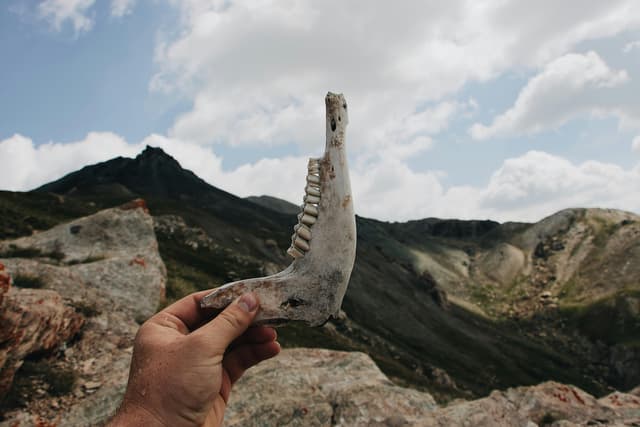Myths about teaching can hold you back
- Year 4
- Year 4
Types of teeth
I can identify and name different types of teeth in humans.
These resources were made for remote use during the pandemic, not classroom teaching.
Switch to our new teaching resources now - designed by teachers and leading subject experts, and tested in classrooms.
Lesson details
Key learning points
- Teeth can be observed in the mouth using a mirror.
- Dentists and dental hygienists use special mirrors to observe teeth more closely.
- At the front of the jaw, incisor teeth look flat and smooth.
- Near the front of the jaw, canine teeth look sharp and pointed.
- At the back of the jaw, molar teeth look wide, flat but bumpy.
Keywords
Teeth - Teeth are used to break down food before it is swallowed.
Observe - To observe is to look very closely and use other senses too.
Incisors - Incisors are sharp, flat teeth found at the front of the mouth.
Canines - Canines are slightly pointed teeth at the sides of your mouth, they are used for tearing food.
Molars - Molars are teeth found at the back of the jaw with a rounded or flattened surface. They are used for grinding and chewing food.
Common misconception
Children may think that all teeth are the same shape and size, and that different teeth do not have different names. They often do not know that our teeth are already in our jaw when we are born.
Allow opportunities for children to feel and look at their own teeth for differences in shape and size.
To help you plan your year 4 science lesson on: Types of teeth, download all teaching resources for free and adapt to suit your pupils' needs...
To help you plan your year 4 science lesson on: Types of teeth, download all teaching resources for free and adapt to suit your pupils' needs.
The starter quiz will activate and check your pupils' prior knowledge, with versions available both with and without answers in PDF format.
We use learning cycles to break down learning into key concepts or ideas linked to the learning outcome. Each learning cycle features explanations with checks for understanding and practice tasks with feedback. All of this is found in our slide decks, ready for you to download and edit. The practice tasks are also available as printable worksheets and some lessons have additional materials with extra material you might need for teaching the lesson.
The assessment exit quiz will test your pupils' understanding of the key learning points.
Our video is a tool for planning, showing how other teachers might teach the lesson, offering helpful tips, modelled explanations and inspiration for your own delivery in the classroom. Plus, you can set it as homework or revision for pupils and keep their learning on track by sharing an online pupil version of this lesson.
Explore more key stage 2 science lessons from the Introduction to the human digestive system unit, dive into the full primary science curriculum, or learn more about lesson planning.

Equipment
Dough or clay - something suitable for modelling gums and teeth. Small mirrors to observe their own teeth.
Content guidance
- Exploration of objects
Supervision
Adult supervision recommended
Licence
Prior knowledge starter quiz
6 Questions
Q1.Where in the human body would you find your teeth?
Q2.Which of these do we need teeth for?
Q3.Which part of your mouth helps you to taste your food?
Q4.When scientists look closely, and use other senses too, they are ...
Q5.What is the part of the body that your teeth push through when they grow?
Q6.Which part of the body is this bone?



